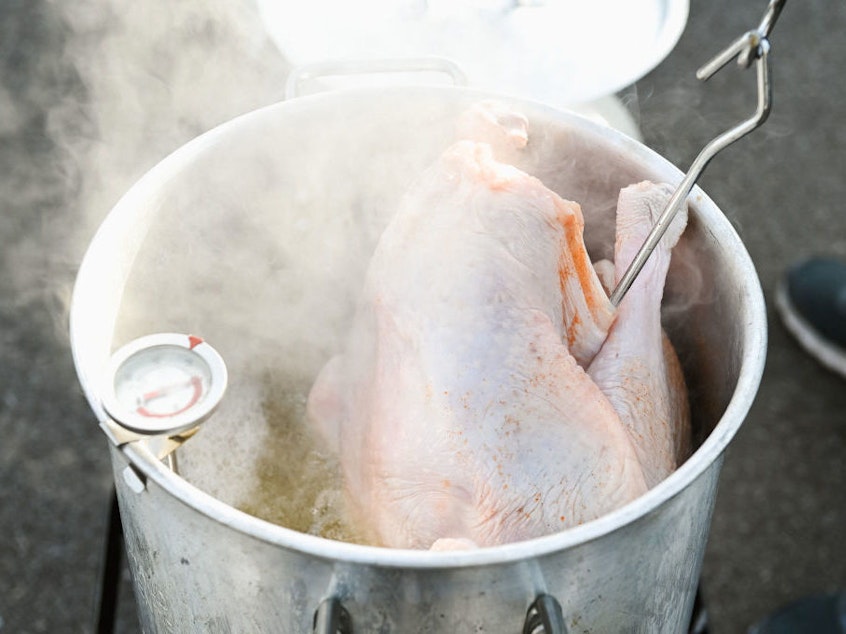How do you know if your oil is hot enough to deep fry? Use your ears

Thanksgiving is almost here and, perhaps, you're planning to brave the deep fryer.
You've got the oil. You've got the pan. You've got the fire. You should be good to go, right?
But, how do you know the oil is ready?
Researchers in the field of fluid dynamics have a trick – use your ears.
The scientists were inspired by a classic kitchen hack, used to test tempura-frying oil. You wet the pointy end of a wooden chopstick, stick it into the oil, and listen.
Sponsored
"If you hear really loud popping or crackling, it's probably too hot," said Tadd Truscott of the King Abdullah University of Science and Technology in Saudi Arabia.
"And then if you don't hear anything, it's usually too cold."
What if the oil is just right?
"Then there's sort of this nice bubbling sound. [It] almost feels like a song to some people, as it was described to me once," Truscott said.
He and his team wanted to see what kinds of bubbles form at different temperatures, and how those bubbles, in turn, create this sizzling "song". So they repeated the chopstick test at different oil temps, ranging from 150 to 210 degrees Celsius, while recording audio and high speed video.
Sponsored
Truscott's collaborator, Rafsan Rabbi of Utah State University, said that when you dip a wet chopstick into hot oil, the water starts to vaporize and form water bubbles that rise to the surface. Air bubbles form too.
"Now that water bubble and those air bubbles would be different in shape and size, and that would dictate the amount of noise that you're actually hearing and that would dictate the frequency of the noise that you're hearing," Rabbi said.
The researchers also said that wooden chopsticks work best for this experiment because they could hold a little bit of water for the test. And no matter how big and fat they were, chopsticks were all pretty much the same size at the pointy end.
So why does this matter? Well, the phenomena they're studying go way beyond the fryer, Truscott said.
"In fact, even in your car, every time there's combustion, a lot of these exact same behaviors are happening. And so all of this is important in our daily lives. We just don't realize it. It's all happening behind the scenes."
Sponsored
OK, real world applications are fine. But how many cooks have seen their work?
Collaborator Akihito Kiyama, a post-doctoral researcher at Utah State, a little sheepishly admitted he lived with his expert.
"Oh yeah, my wife," Kiyama said.
"Yeah, Aki's wife was our go-to chef," Truscott added, laughing.
Kiyama will present the results of their study next week in Phoenix, Arizona at the 74th Annual Meeting of the Division of Fluid Dynamics.
Sponsored
No word yet on how many fry chefs will be there. [Copyright 2021 NPR]



